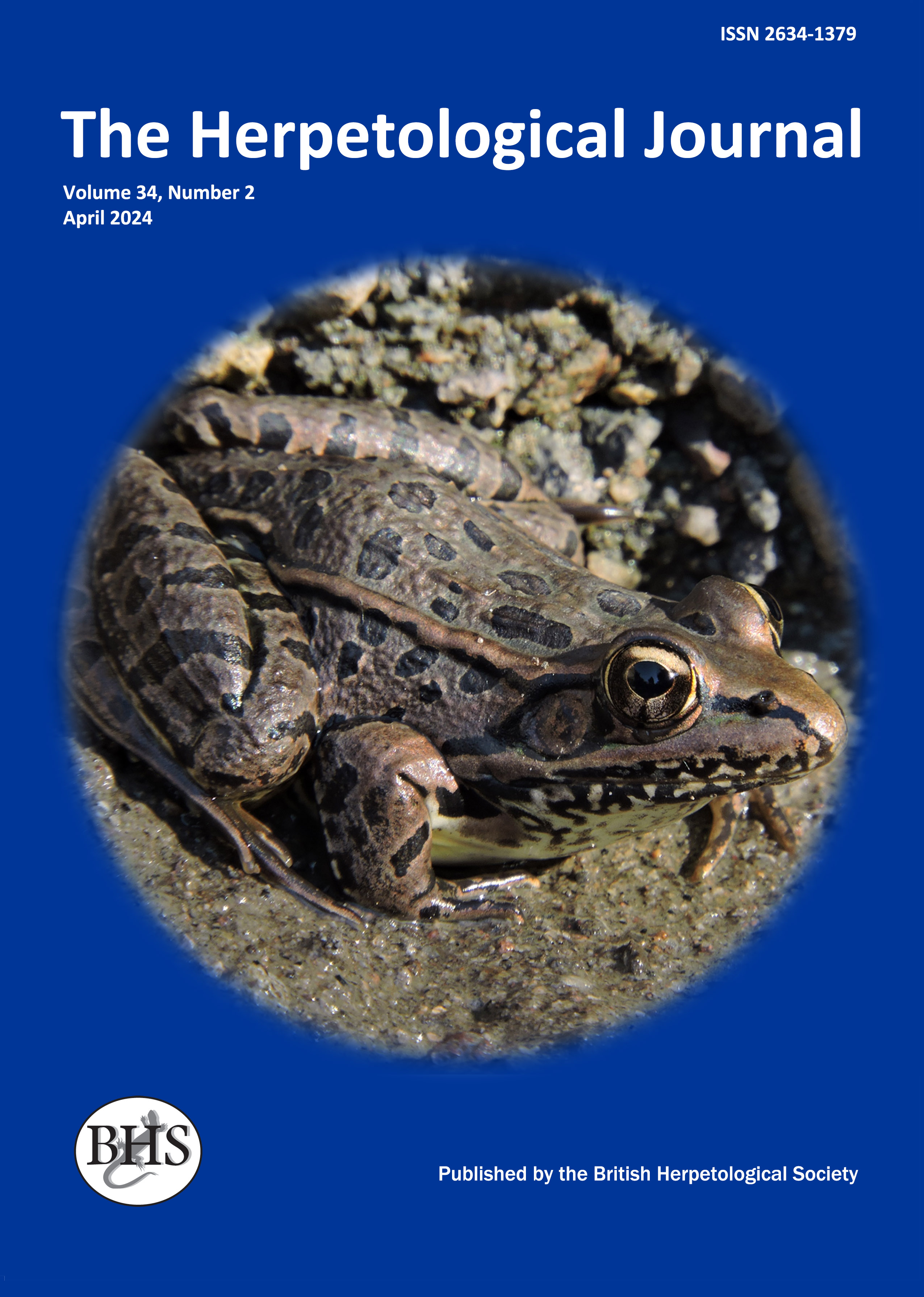
The Herpetological Journal
The Herpetological Journal is the Society's prestigious quarterly scientific journal. Articles are listed in Biological Abstracts, Current Awareness in Biological Sciences,Current Contents, Science Citation Index, and Zoological Record.
ISSN 0268-0130
2021 Impact Factor from Clarivate for the Herpetological Journal is 1.194, an increase of 0.332 from 2020.
pdf 02.Population status of great crested newts (Triturus cristatus) at sites subjected to development mitigation
1063 downloads
Open Access
pp. 133-142
Authors: Brett Lewis, Richard A. Griffiths & John W. Wilkinson
Abstract: Increasing development of natural habitats frequently causes conflict with the conservation of protected species. Consequently, interventions that attempt to mitigate the impact of development are becoming increasingly commonplace. We used four approaches to assess the effectiveness of development mitigation on a species subject to widespread development pressures
in Europe – the great crested newt (Triturus cristatus). Firstly, a systematic evidence review revealed eleven published studies
of great crested newt populations at development sites. None provided conclusive evidence that the mitigation carried out was effective in maintaining populations. Secondly, less than half of 406 mitigation licence project files examined contained reports of results. Of those that did, only 16 provided post-development population assessments. These included one extinct population, and 10 ‘small’ populations. Thirdly, standardised population assessments were carried out at 18 sites in England, at least six years after the initial mitigation was completed. Although newt populations persisted at most of these sites, there was evidence of an overall decline, with extinctions occurring at four sites. Fourthly, although the annual cost of mitigation for great crested newts in England is estimated at between £20-43 million, information on the status of populations and habitats makes it difficult to assess whether this is cost-effective for either conservation or development. The quality and quantity of available data make it difficult to assign reasons for population changes at mitigation sites, but the study highlighted four general issues concerning mitigation practice: (1) presence of non-viable populations pre-mitigation; (2) inadequate mitigation interventions and site management; (3) cumulative impacts of further developments; and (4) emergence of new threats post-mitigation. Nevertheless, it is possible that some mitigation activities may have unforeseen and undocumented benefits, such as providing green spaces and biodiversity enhancement in urban areas.
Keywords: amphibian, conservation, habitat management, impact assessment, salamander

